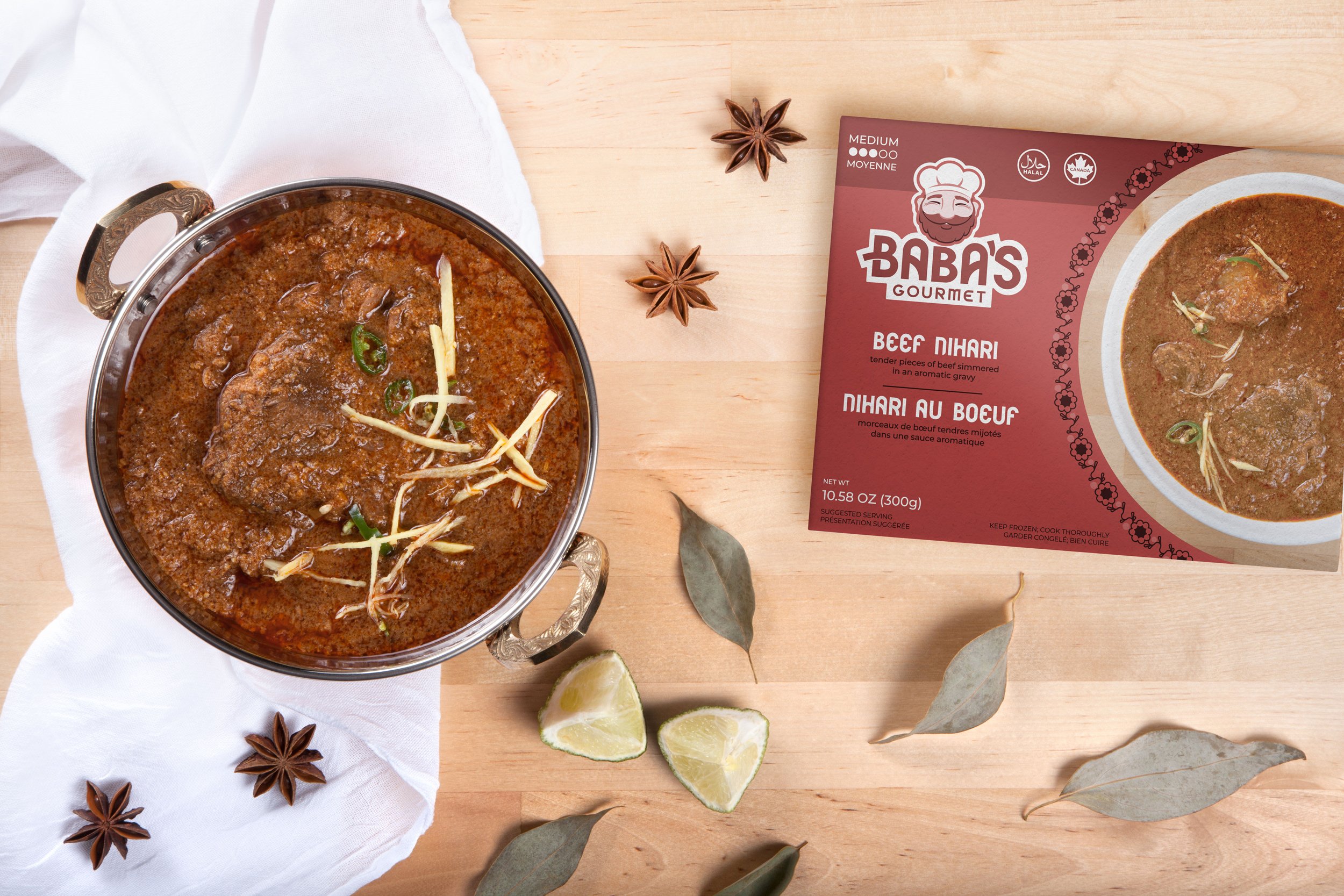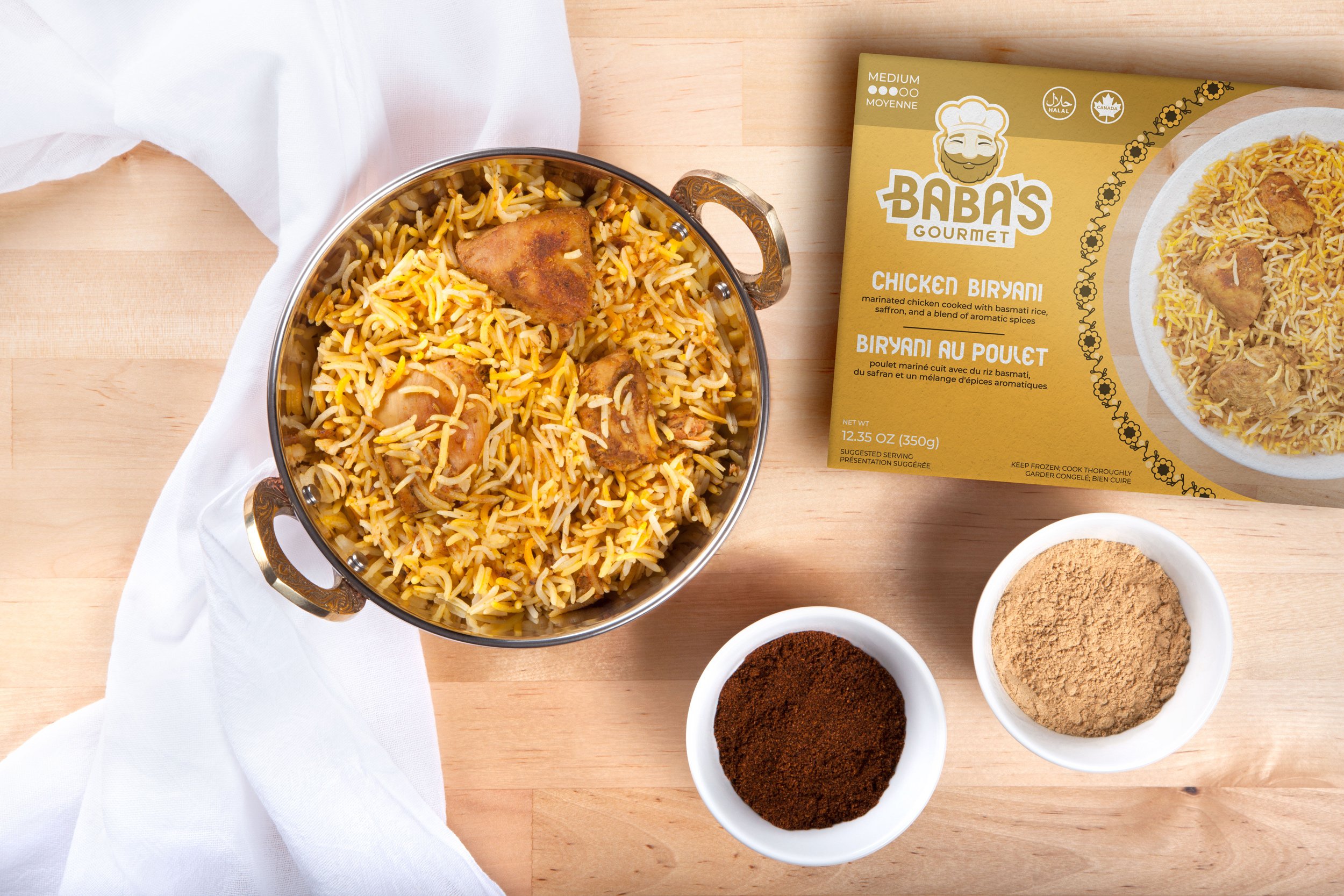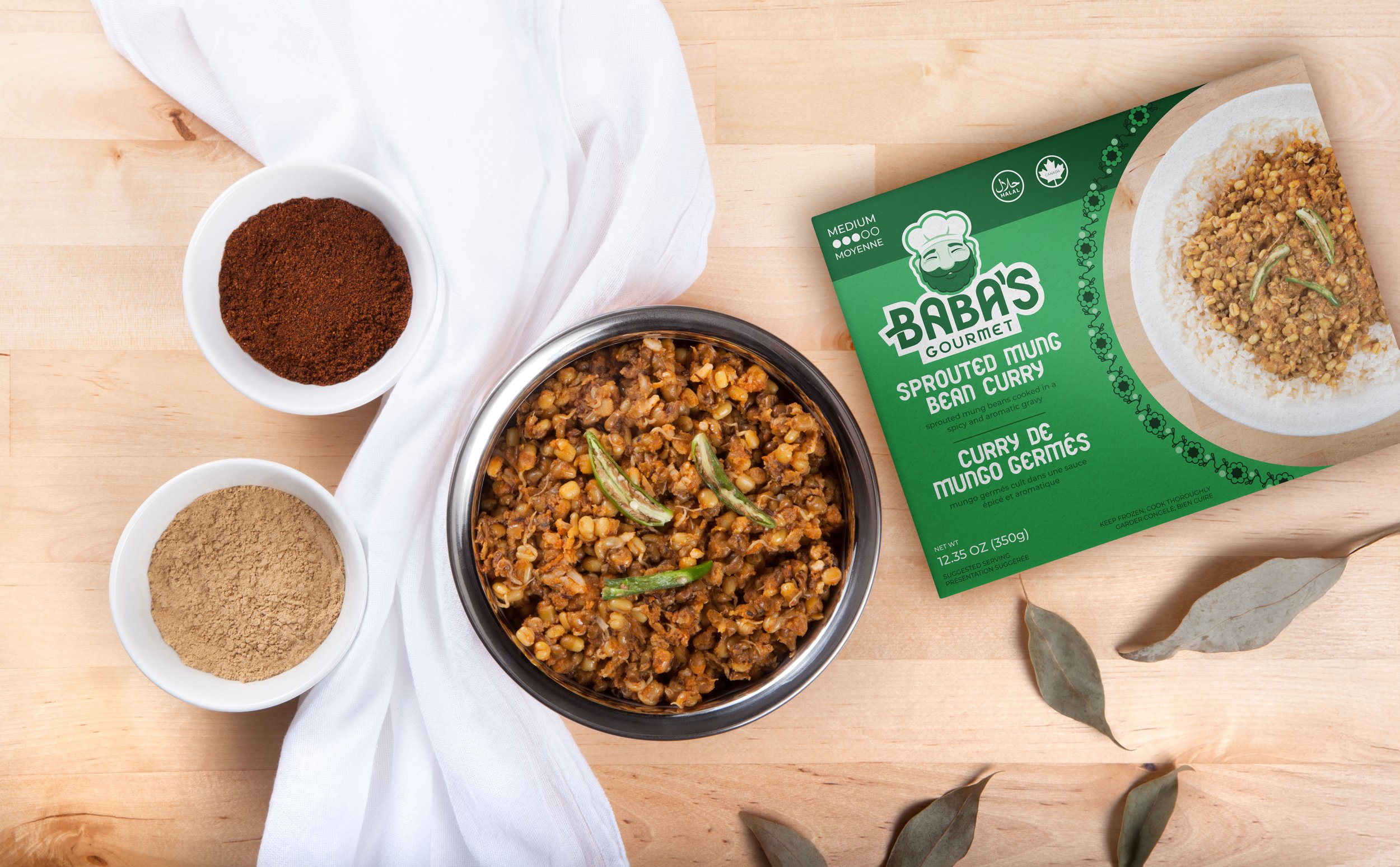Traditional Pakistani food,
now available as frozen meals
BOLD
•
AUTHENTIC
•
FLAVORFUL
•
BOLD • AUTHENTIC • FLAVORFUL •
Welcome to Baba’s
Our selection of frozen food is certified halal food; crafted with authentic Indian spices and whole ingredients. For traditional recipes that have been loved for generations, bring the warmth of Baba’s kitchen straight to your table.
Explore our products and bring home the taste of traditional Pakistani cooking today.
Beef Nihari
Beef Nihari is a rich, slow-cooked stew originating from the Indian subcontinent. It features tender pieces of beef simmered with a medley of aromatic spices, creating a deep and flavorful gravy.
Our Beef Nihari is authentically prepared using an expertly crafted mix of ginger, garlic, cardamom, cloves, and a blend of traditional and authentic Nihari spices. Nihari is traditionally enjoyed with naan or rice and garnished with fresh cilantro, thinly sliced ginger, and a squeeze of lemon for an added zest. It's a beloved comfort food that's perfect for when you're looking for hearty and satisfying frozen meals.
-
Beef Nihari has a rich history that dates back to the 18th century in the Indian subcontinent. It originated in the royal kitchens of Lucknow, the capital of the Oudh State under the Mughal Empire. The dish was initially consumed as a high-energy breakfast by the nawabs (nobles) after their morning prayers. The name "Nihari" comes from the Arabic word "Nahar," meaning "morning".
Nihari was traditionally made with slow-cooked meat, such as beef, lamb, or goat, along with bone marrow, and flavored with a blend of spices. Over time, it gained popularity among the masses and became a staple in Mughal-era royal cuisine. Following the partition of India in 1947, many Urdu-speaking Muslims from India migrated to Pakistan and established restaurants serving Nihari, which further increased its popularity.
Today, Nihari is enjoyed by people across the Indian subcontinent and beyond, often served with naan or rice and garnished with fresh herbs and spices.
-
MICROWAVE (1000 WATTS)
Puncture film with a fork to allow steam to escape.
Cook on high for 6 minutes until heated thoroughly.*
Carefully remove hot tray.
Let product stand 1-2 minutes.
Remove film, stir gently and serve.
CONVENTIONAL OVEN
Pre-heat oven to 200°C (400°F).
Place tray on baking sheet in center of oven.
Cook for 23-25 minutes until heated thoroughly.*
Carefully remove hot tray from the oven.
Let product stand for 1-2 minutes.
Remove film, stir gently and serve.
*Cook thoroughly to an internal temperature of 74°C (165°F). These are guidelines only, individual appliances vary. Do not heat in toaster oven.

Chicken Biryani
Chicken Biryani is a fragrant and flavorful rice dish that originates from the Indian subcontinent. It's a layered dish featuring marinated chicken cooked with long-grain basmati rice, saffron, and a blend of aromatic spices like cumin, cardamom, cloves, and cinnamon. The chicken is often marinated in yogurt and seasoned with spices before being cooked to tender perfection.
Our Chicken Biryani is prepared using the traditional layering method and finished off with a slow cooking process, resulting in an aromatic and flavorful meal derived from Indian spices. Like all our dishes, it is certified halal food brought to you as a frozen food option.
-
Chicken Biryani is known for its rich, complex flavors and is often accompanied by raita (yogurt sauce) or a simple salad. It's a festive and celebratory dish enjoyed on special occasions and gatherings.
The word "biryani" is derived from the Persian words "birinj" (rice) and "biryan" (to fry or roast). The dish was popularized in the royal kitchens of the Mughal Empire, where it was refined and adapted to local tastes. The Mughals introduced the concept of layering marinated meat with rice and cooking it together with aromatic spices, creating the rich and flavorful dish we know today.
-
MICROWAVE (1000 WATTS)
Puncture film with a fork to allow steam to escape.
Cook on high for 6 minutes until heated thoroughly.*
Carefully remove hot tray.
Let product stand 1-2 minutes.
Remove film, stir gently and serve.
CONVENTIONAL OVEN
Pre-heat oven to 200°C (400°F).
Place tray on baking sheet in center of oven.
Cook for 23-25 minutes until heated thoroughly.*
Carefully remove hot tray from the oven.
Let product stand for 1-2 minutes.
Remove film, stir gently and serve.
*Cook thoroughly to an internal temperature of 74°C (165°F). These are guidelines only, individual appliances vary. Do not heat in toaster oven.

Sprouted
Mung Bean Curry
Sprouted Mung Bean Curry is a nutritious and flavorful dish made from sprouted mung beans cooked in an aromatic gravy with a blend of Indian spices. The sprouted mung beans add a unique texture and a burst of freshness to the curry.
The dish is prepared with ingredients such as onions, tomatoes, ginger, garlic, and a variety of spices like cumin, coriander, turmeric, and garam masala.
The curry is simmered until the beans are tender and infused with the rich flavors of the spices. It's often garnished with fresh cilantro and served hot with rice. This Sprouted Mung Bean Curry is not only delicious but also packed with protein and essential nutrients, making it a wholesome and satisfying choice when looking for easy to make Pakistani food.
-
Mung beans are native to India, where they are called moong dal, and are known to have been cultivated as early as 1500 B.C. Today they are a widely enjoyed food and can be found in dishes around the world.
Mung beans are a good source of protein, minerals, beneficial enzymes, and are rich in vitamin B-9 (or folate). Early research into the benefits of mung beans suggests that they can have a range of potential health benefits, including anti-oxidants, anti-inflammatory activity, and could help lower blood pressure and hypertension.
By sprouting a mung bean before eating, its nutritional composition is changed. The sprouted beans contain fewer calories and more free amino acids and antioxidants than unsprouted ones. Sprouting also reduces the levels of phytic acid (an antinutrient) in the mung bean, which allows you to better absorb minerals like zinc, magnesium and calcium.
-
MICROWAVE (1000 WATTS)
Puncture film with a fork to allow steam to escape.
Cook on high for 6 minutes until heated thoroughly.*
Carefully remove hot tray.
Let product stand 1-2 minutes.
Remove film, stir gently and serve.
CONVENTIONAL OVEN
Pre-heat oven to 200°C (400°F).
Place tray on baking sheet in center of oven.
Cook for 23-25 minutes until heated thoroughly.*
Carefully remove hot tray from the oven.
Let product stand for 1-2 minutes.
Remove film, stir gently and serve.
*Cook thoroughly to an internal temperature of 74°C (165°F). These are guidelines only, individual appliances vary. Do not heat in toaster oven.


